The town of Elgin Park isn’t real — despite how real it may seem. A creation of photographer Michael Paul Smith’s imagination, photos of the miniature fictional town went viral online several years ago, as fans were taken by the Smith’s dream-like recreation of an American of decades past. Elgin Park is a 1/24th-scale recreation of everyday scenes from mid-20th century America, ranging from the 1920s to the mid-1960s. The staged, forced perspective photos were made using tiny hand-built models of homes, storefronts, and more, but appeared stunningly life-like. His photos have reached millions of people.
This summer, Drew Petersen, the Artistic Director of Trusty Sidekick Theater Company, and Jae Lee and Yvonne Chang of Wildrence are bringing Michael Paul Smith’s town to life in Manhattan’s Chinatown with their immersive show Elgin Park, which is being created with permission from the late photographer’s estate (Smith passed away last November).
Learn more about the family-friendly production in this interview, below.
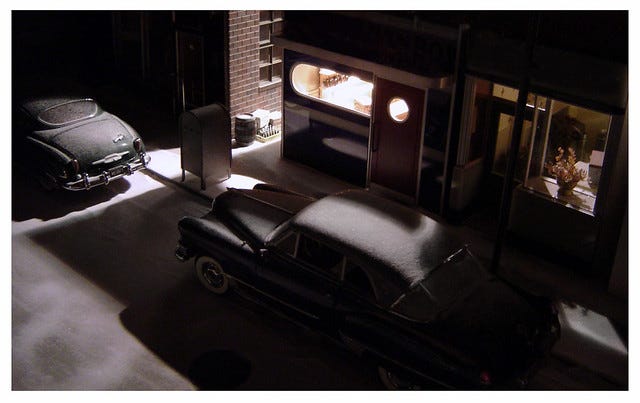
No Proscenium (NP): Can you tell us a little about yourselves and your backgrounds?
Jae Lee (JL): I am the co-founder of Wildrence, a design studio that creates seamless interactive experiences through the combination of technology and touchable environments. In 2014, I also co-founded Public Matter with Yvonne; our work has been showcased and featured at the TED conference in Vancouver, New York Festival of Lights, Redbull, the Centre for Social Innovation.
I am interested in how design can be used as a tool to impact the relationship between humans and space across multiple levels of scale, from the smallest detail to the whole picture. Using my experience as an interactive designer and background in architecture, I create immersive worlds to inspire imagination and creative play.
Yvonne Chang (YC): I am also the co-founder of Wildrence. In 2014, I co-founded Public Matter with Jae. I believe in awakening human interaction within a designed environment by leveraging the power of storytelling, sensory engagement, and a sense of adventure.
By combining my professional training in architecture and an eye for tactile details, I design and create intimate and sensory driven experiences.
Drew Petersen (DP): I am a New York City-based artist and educator. I am currently an educator with Park Avenue Armory and The New Victory Theater. As an artist, I am also the Artistic Director for Trusty Sidekick Theater Company, a theater company devoted to creating high quality, original work for young audiences and their families. I have been commissioned by and have created original work with Lincoln Center Education, The Kennedy Center, Park Avenue Armory, New Victory Theater, Cleveland Playhouse Square, Classic Stage Company, PACE University, The Tank and Curio Theater Company in Philadelphia. In 2018, I was the first ever recipient of the Artistic Innovation Award from TYA/USA for progressive and emergent theater making in the field of theater for young audiences.
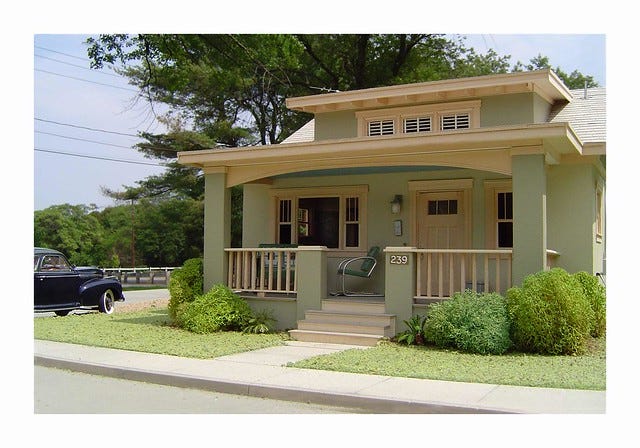
NP: What, in a nutshell, is the Elgin Park project about?
JL: Elgin Park, on the surface, is a story about Michael Smith, a model maker and dreamer, and his relationship with his brother, his town, and the people of his town. If you look a little deeper, it is also a story about the journey through loneliness, bravery, and mystery. It is about how one soul grows and connects with others, and together they find who they are.
DP: To me, in a nutshell, Elgin Park is about power and beauty in imagination. The comfort and communities we create in the worlds we build. There is a great sentiment said by the theater director, Peter Sellars. He says there are only 3 steps to making great work:
- Imagine the world you want to live in;
- Create that world, and;
- Live in that world.
Elgin Park seems to epitomize those three things.

NP: Why did you create this experience? What inspired you?
DP: Like so many others, I was awestruck and spellbound by Michael Smith’s models, photos, artistry, personal story, and world of Elgin Park. I remember looking at the photos and saying, “This is a show?” Also, the Wildrence space is a huge source of inspiration. My first encounter with it felt like I stepped into an intimate, little, mid-century gem. It reminded me of going to my grandparents house which felt rich with treasure, nostalgia, mystery, magic, and frozen in time.
In many ways, the ‘why’ for me regarding this show truly felt like it came from the desire to have an audience escape the real world and get lost in another world and story. I couldn’t think of a better way to do that than to immerse people in a 360-degree way, but also bring sections of the story into a hyper-intimate place using the models and in 1:48th/O Scale. J
ust like when we were children playing with small scale things or toys amongst the trunks in the attic, I wanted to create a child-like escape from reality.
JL: As Drew mentioned, the story behind Michael Smith and the world he created is already so inspiring. The key takeaway from my introduction to his work, was the power of imagination. The beauty of Michael’s models and photographs are that they are incredibly realistic. But that realism doesn’t restrain you, it opens a window into another world. Looking at a photograph and you are able to believe and imagine a real world built around it.
We wanted to translate that feeling of agency and creativity into a show, using the relationship between models and real life, where audience members can build their own world around the characters and story we give them.
NP: How is Wildrence incorporated into the Elgin Park experience?
DP: For me, Wildrence is Elgin Park. When we move through Wildrence, we are standing inside and walking amongst the buildings and spaces of the models of Elgin Park. With that in mind, the script was written and sculpted in a way that addresses the unique spaces of the Wildrence.
We don’t ignore the architecture and style of the space, we lean into it, embrace it, and include it in the narrative. The phrase I often use for this kind of work is ‘site empathetic.’ This show feels highly site empathetic.
JL: Ahhhh, Drew is giving the space a lot of credit. Thank you, Drew!
Well, Wildrence (as the design studio) is co-creating Elgin Park with Drew. As for how our space works within the project, I’d like to say it’s partially kismet that the space’s environment and charm really felt like a natural fit with the feeling of the project, but it was also a lot of walk throughs and conversations on how each room can be adjusted best benefit the story. It does definitely help a lot to be able to create the story after seeing the space. As we do with all of our projects that we partner with, the space will be transformed to emulated the lived-in, homey town of Elgin Park.
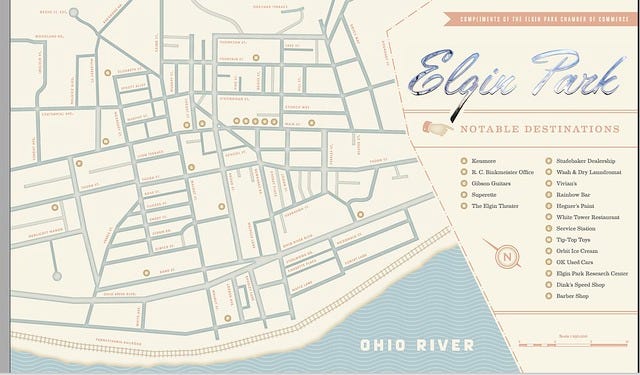
NP: How are you creating an experience that is appealing to both kids and adults alike?
DP: Honestly, I always try to make theatre that lands with equal gravity for both young people and adults. In that way, this is basically theatre for all audiences. I think that both young people and adults can take something from a story about imagination and community. We are trying to create a kind of ghost story. The ones you might have told (or, if you are currently young, will tell this summer) when you were having a sleepover in a tent in your own backyard or told in the dark with flashlights in your friend’s basement.
When creating a piece and a story like this, we don’t dumb anything down but we don’t over complicate either. We aim to create an experience where a 10-year old and an 80-year old could both say, “Oh, this is for me.”
YC: The story has a thrilling nature that begins similarly to when you read the blurb of a crime fiction novel, setting a dark, beautiful, and intriguing atmosphere. The underlying magic element throughout the storyline is also something that can get people of all ages excited.
With a model maker as our main character, there is something innately special seeing a world in a much smaller scale, then at moments during the experience, being able to relive some scenes in the built out space of what the models can look like.
One thing we intentionally do is to pair only one young person with one adult. We believe that there can be a special connection between the two while investigating the storyline together, bringing out the childlike curiosity in an intimate setting.
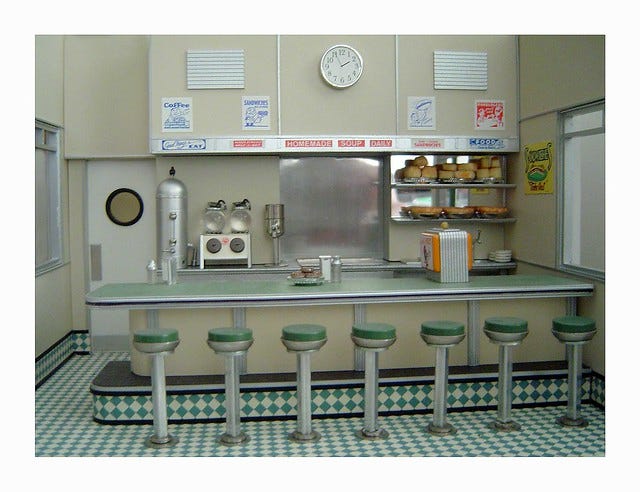
NP: How is the audience incorporated into Elgin Park? What kinds of choices can the participants make?
DP: Whenever I make this kind of work, I employ educational theater techniques, pedagogies and best practices to involve and empower the audience in authentic and meaningful ways. There is a great educational theater pedagogy called “Mantle of the Expert” which essentially puts young people in the role of expert.
DP/YC/JL: In the show, we engage the audience in both low and high focus ways and scaffold up the audience engagement throughout the piece. The audience will do everything from softly embodying roles of citizens of Elgin Park to making narrative choices that steer the direction the characters pursue. Also, sometimes, the characters don’t “move forward” without the audiences’ help. We really wanted to make sure that the interactive part of this experience gets the audience involved in the story.
NP: How are you designing around audience agency, consent, and safety?
DP/YC/JL: This is interesting because with the boom of immersive theatre, some tropes have come along or been established that aren’t or don’t have to be present in every immersive show. An example is the idea that audiences can dig through every prop or object to uncover more narrative or secrets. When we set clear boundaries and expectations, the audience can be better informed how to engage and unfold their experience. With our show, storytelling and narrative has always been right at the forefront. Our show has language, when so many immersive shows are purely movement based. For us, we wanted to put storytelling at the heart of the show and include the audience, not simply as a listener of the story, but as a participant in it. In this way, the performers and audience are in service and taking care of each other.
For us, real audience agency doesn’t come with the ability to just touch something but the ability to help guide narrative and make choices that have consequences for the characters.
From a consent and safety standpoint, the moments that we invite the audience to participate will be clearly marked by an opportunity to consent. Also, we have been playing with a lot of different ways to pull an audience in, besides leading them by hand, that give them the choice to act.
NP: Who is the ideal audience member for this show?
DP/YC/JL: Honestly, anyone over 10 years old who likes a good story, has a robust imagination, and maybe wouldn’t mind visiting a small, North-Eastern, American town in 1956.

NP: What do you hope participants take away from the Elgin Park experience?
DP: I hope audiences and participants feel pride and sentiment for the communities they live in, grew up in, create, or imagine.
In a past immersive work I created, I heard a 3rd grader say, “I felt like I was fainting into the story.” I would love if audiences felt like they fainted into the story and never wanted to leave.
JL: I think the beauty of a story based around small scale models in a larger immersive environment is that it almost feels like a mostly blank journal. There is some information about characters, something that happened, what the place looks like, but everything else is up to your imagination and interpretation. In the end the story of Elgin Park should be yours, your interpretation of: Michael Smith, a disappearance, and how that mystery gets solved.
YC: I hope participants can fully open up their imagination during the experience and be able to question and stitch together the different layers of story afterwards.
The experience may evoke one’s deepest memory. Maybe it’s something you cannot let go, or some feelings you’ve stored away and never resolved. I hope participants can find a way to revisit some of their memories and find balance and contentment.
Elgin Park runs at Wildrence June 27 — July 14. Tickets are $65 for general admission, and $85 for general admission plus a young adult. The experience is designed for those 10+.
Find out more about Michael Paul Smith’s work.
NoPro is a labor of love made possible by our generous Patreon backers. Join them today!
In addition to the No Proscenium web site, our podcast, and our newsletters, you can find NoPro on Twitter, Facebook, YouTube, Instagram, in the Facebook community Everything Immersive, and on our Slack forum.
Office facilities provided by Thymele Arts, in Los Angeles, CA.




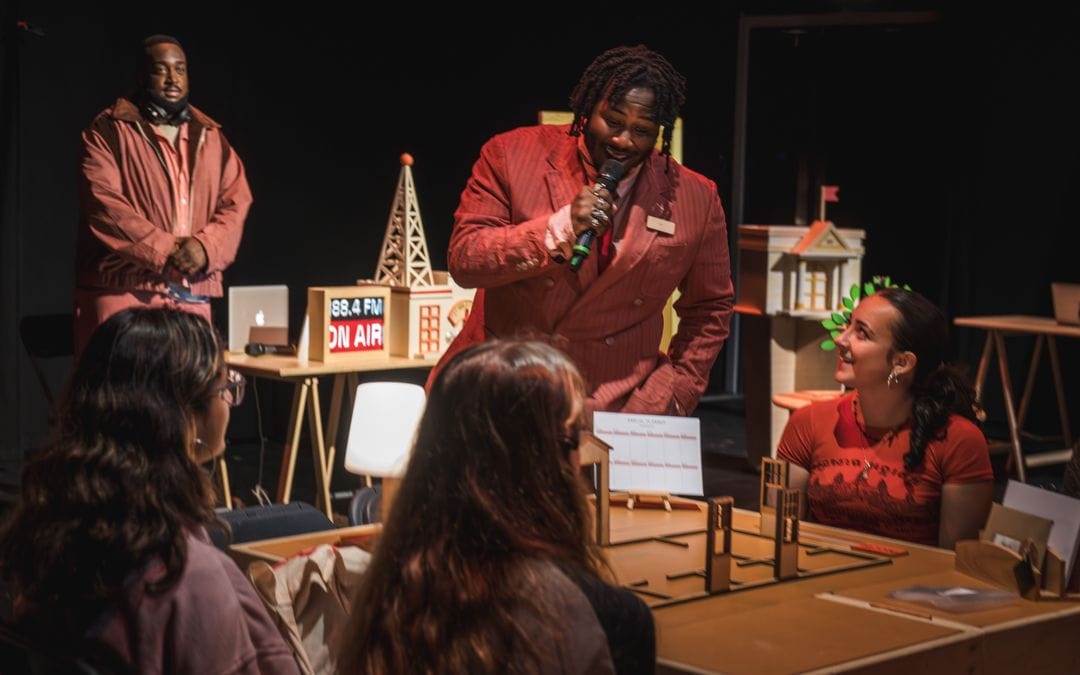















Discussion